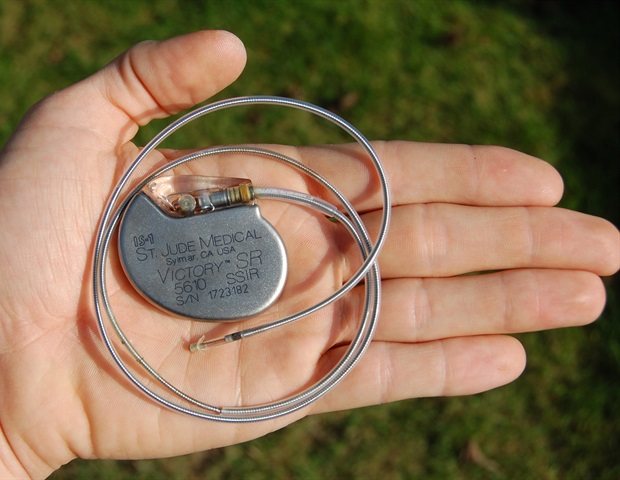Come learn about the Parthenon and its rich art history while working on a fun coloring page of the Parthenon! Kids of all ages at home or in the class room will love this coloring page and have a blast learning about some Greek art history! Simply download & print the Parthenon coloring page and have some fun while learning about the art history of the Parthenon! Grab your crayons, markers, and colored pencils and have loads of fun coloring these Parthenon coloring pages!

Read more about the Parthenon and some of its history at the end of this article!
Free printable parthenon coloring page
This printable set includes two fun coloring pages! One of the Parthenon’s pillars and one one some of the statues at the Parthenon! The Parthenon is one of the most famous land marks of Greece and is a symbol for both ancient and modern Greek culture and art! Have a blast coloring this awesome coloring page of the Parthenon! Click the green button to download and print the Parthenon coloring page now:
If your kids love Ancient Greece, history, art, or learning about other places and cultures they’ll love these super fun coloring pages! Our collection of Parthenon coloring pages include two coloring sheets with detailed drawings of the Parthenon that everyone can enjoy. Let’s see what we’ll need to color these printables:
1. The Parthenon caryatid Columns Coloring Page

Our first Parthenon page features the caryatid column statues from the Parthenon. The statues are currently a white-yellow marble color, but back in Ancient Greece these statues were beautifully painted in all sorts of colors. So grab your most colorful crayons, markers, paints, or colored pencils. All will work for this coloring page!
2. The Parthenon Coloring Page

Our second coloring page is the front of the columns of the Parthenon. Just like the caryatid statues, the Parthenon is currently a white-yellow marble color, but in Ancient Greece the parthenon was painted and decorated with all sorts of colors! The Parthenon was likely mainly white with main accents of blue, gold, and red, so grab your crayons, colored pencils, markers, and paints in these colors! All these supplies will work perfectly!
DOWNLOAD & PRINT FREE Parthenon COLORING PAGES PDF HERE
RECOMMENDED SUPPLIES FOR Parthenon COLORING SHEETS
Parthenon Coloring Page includes
These free printable Parthenon coloring pages allow kids to use their creativity and create unique images. In our set of Parthenon coloring pages you will get to color some of the statues from the Parthenon and the front of the Parthenon to color? How cool! You can learn all about the history of the Parthenon at the end of this article.
DEVELOPMENTAL BENEFITS OF COLORING PAGES
We may think of coloring pages as just fun, but they also have some really cool benefits for both kids and adults:
- For kids: Fine motor skill development and hand-eye coordination develop with the action of coloring or painting coloring pages. It also helps with learning patterns, color recognition, structure of drawing and so much more!
- For adults: Relaxation, deep breathing and low-set up creativity are enhanced with coloring pages.
The Parthenon Art history
What is an acropolis?
An acropolis is a type of building, usually a castle, fortress, or another type of complex building, that is built high up on a raised piece of land. One of the most famous examples of an acropolis is the Acropolis in Athens, Greece. The word “acropolis” originally comes from Greek and roughly translates to “city in the air.”
The Acropolis in Athens, Greece is most know for housing the Parthenon, one of the most famous Ancient Greek temples!
Ancient Greek history and culture
The Parthenon located in Athens, Greece is estimated to have been built in 432 BCE when Athens was ruler by Pericles, the man who invented Greek democracy. The Parthenon was built to house a massive statue of the goddess Athena, Athens’ patron goddess! The Parthenon was also built to commemorate the Greek victory over the Persian army who had invaded Greece. The Parthenon itself was also named after one of the epithets of Athena, Athena Parthenos, and parthenon means “house of Parthenos.”
The Parthenon was used as a temple by the Athenians for countless years. It was even used as a treasury for the city-state of Athens as well! In addition to this, some scholars speculate that the Parthenon may have been a votive offering to the goddess Athena as a thanks for protecting Athens and helping the Greeks secure victory over the Persians.
ancient Greek ARCHITECTURE
The Parthenon was designed by the Greek architects Iktinos and Kallikratis. The project was managed by Phidias, a sculptor. All three of these artisans contributed to making the Parthenon the marvel of ancient architecture and engineering that it is. To create the Parthenon, both the traditional Doric style and the newer Ionic style.
The Parthenon is approximately 300 meters by 150 meters and is 70 meters high at its tallest point. Large marble blocks from the near by Mount Pentelicus were used to construct the building, approximately 22,000 tons of marble were used in the buildings construction!
Due to its size, the Parthenon’s columns had to be constructed in a very specific way so the building wouldn’t look like it was about to cave in on itself. In order to prevent this visual effect, the columns were built with a slight curve to them to make it look like the Parthenon stood tall and perfectly straight. All the columns were also made to be flat in the middle to further sell the illusion of straight lines.
Sculptures of the Parthenon
The Parthenon was decorated with countless intricate statues, beautiful reliefs, a frieze around the entire building, and other fanciful decorations. Much of the history of Athens was depicted in these artworks, such as the defeat of the Persian army. There were also countless depictions of the Greek gods, heroes, and other important figures in Ancient Greek culture.
Inside the temple there was a huge statue of Athena of Pheidias which was over 12 meters high! The statue was made of ivory and gold, likely making it far more expensive than the Parthenon itself! Unfortunately, the statue of Athena has been lost to history. However, there are a few, smaller copies made by Roman sculptors.
The Parthenon would become a symbol for Athenian culture during this time and was just as much a symbol of Athens as the owl or Athena herself. Later in history, the Parthenon would come to be one of the most prominent symbols of Greece, both ancient and modern.
The Parthenon in Modern history
In the 5th century CE, the Parthenon would be converted from a Greek temple to a Christian church. The new Christian owners of the building added on a few elements, such as an apse and a bell tower, and removed and destroyed some the original artwork. Other than this, the Parthenon stayed in relatively good condition for the next 1,000 years.
Later in 1458, during the Ottoman occupation of Greece, the Parthenon was converted to a Muslim mosque. A minaret, a place where Muslim prayers are called from, was added onto the building.
In 1687, the Venetian army attacked the Parthenon, which was being used as gunpowder and weapon storage by the Ottoman army. The gunpowder and weapons were blown up, causing much destruction to the Parthenon. A smaller mosque was build by the Ottomans, but there was no attempt to restore the parts of the Parthenon that had been destroyed.
During the 19th century, British ambassador Lord Elgin, visited Greece which was under rule of the Ottoman Empire at the time. While he was there, he wanted to take some of the sculptures from the Parthenon because he wanted to contribute to Britain’s collection of classical art from ancient Greece and Rome. He was able to successfully bring back hundreds of statues to Britain, but this was not without consequence.
Watch this educational video by Smarthistory to learn more about the statues at the Parthenon!
Video: Learn More About The Parthenon Sculptures
MORE COLORING PAGES & PRINTABLE SHEETS FROM KIDS ACTIVITIES BLOG
MORE HISTORY FUN AND ACTIVITIES FOR KIDS FROM KIDS ACTIVITIES BLOG
Did you enjoy the coloring pages? Let us know in the comments!
Sources
Cartwright, Mark. “Parthenon.” World History Encyclopedia. https://www.worldhistory.org#organization, April 28, 2023. Last modified April 28, 2023. Accessed November 3, 2023. www.worldhistory.org/parthenon/.
“History Summarized: The Acropolis.” Overly Sarcastic Productions. YouTube, April 29, 2022. Last modified April 29, 2022. Accessed November 3, 2023. www.youtube.com/watch?v=9XvUjdTkJ3o.
Macquire, Kelly. “The Early History of the Parthenon, Acropolis and Agora of Ancient Athens.” World History Encyclopedia RSS. https://www.worldhistory.org#organization, July 24, 2022. Last modified July 24, 2022. Accessed November 3, 2023. www.worldhistory.org/video/2807/the-early-history-of-the-parthenon-acropolis-and-a/.
Mark, Joshua J. “Acropolis.” World History Encyclopedia. https://www.worldhistory.org#organization, July 25, 2022. Last modified July 25, 2022. Accessed November 3, 2023. https://www.worldhistory.org/Acropolis/.
“Who Owns the Parthenon Sculptures?” World History Encyclopedia. YouTube, March 16, 2018. Last modified March 16, 2018. Accessed November 3, 2023. https://www.youtube.com/watch?si=EPu8LAWNVqenzN5a&v=QRH105_ztAw&feature=youtu.be.

 PARENTING TIPS
PARENTING TIPS







 PREGNANCY
PREGNANCY








 BABY CARE
BABY CARE








 TODDLERS
TODDLERS








 TEENS
TEENS








 HEALTH CARE
HEALTH CARE







 ACTIVITIES & CRAFTS
ACTIVITIES & CRAFTS








 CONTACT
CONTACT ABOUT
ABOUT



